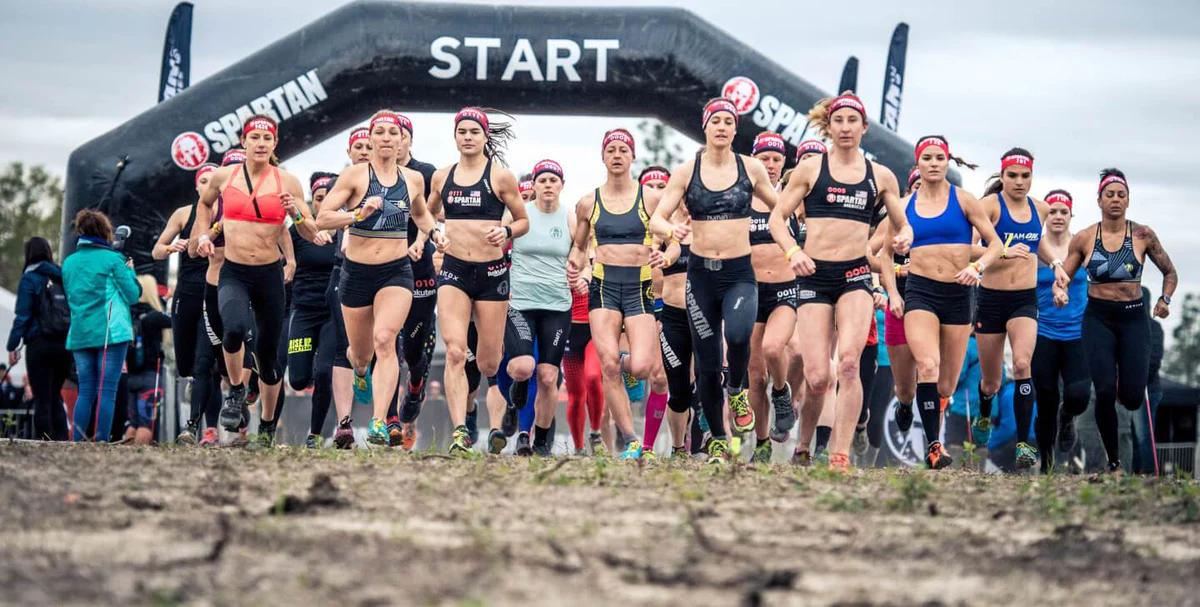Undernourished? Warning Signs to Watch Out For (+ Pro Tips to Fuel Up)

Sponsored by our partner, Honey Stinger
Feeling ultra-low in energy, slow to recover from tough workouts, and either totally drained or restless at bedtime? You may not be giving your body the nutrition it needs to keep up with your training demands. But it could be a simple nutritional imbalance in your workout regiment that needs tweaking.
If you underestimate the protein, fats, sugars and carbohydrates you need to push on, it can have detrimental effects on your body’s ability to recover properly. “When you are undernourished in training or racing, your physical output is significantly affected,” says Corinna Coffin, MS, RD, and Spartan Elite athlete. “It’s a tough pill to swallow when you know you’re only functioning at 75% capacity due to a completely controllable factor such as nutrient intake.” (Keyword: “controllable”!)
As an athlete, it’s always smart to have snacks — and a variety of them — on hand to provide immediate fuel when training. From quick-draw energy gels to longer-lasting protein bars, aim to consume at least 150-200 calories per hour while training or racing, to make up for the deficit. You should also make your drinks work for you, especially if consuming solid foods while training is a challenge. “Liquid carbohydrates in the form of a sports drink may be helpful with a sensitive stomach or when solid food isn’t tolerated,” says Coffin. “Like most things, it’s always best to be over prepared than underprepared, and nutrition is no exception.”
So if you feel like you don’t quite have your nutrition dialed, and frequently experience fatigue outside the realm of natural exercise-exhaustion, read on for pro tips to brush up your nutrient intake. With the right balance of macro and micronutrients, you’ll be performing at your max, and crushing your PR, in no time.
Related: How to Fuel Up (And Recover Smart): Q&A with Spartan Pro Nicole Mericle
What Does Being “Undernourished” Mean?
Being “undernourished” as an athlete can refer to many different insufficiencies (or a combination of them), according to Coffin. Primarily, you may have low levels of vitamins and/or minerals, you may be lacking a macronutrient, or may not be eating enough, period. This can all result in weakness, fatigue, muscle cramps, tingling or numbness in the extremities, dizziness, and irregular sleep patterns. “If we don’t put gas in the tank, how can we expect the engine to run?” says Coffin.
According to the International Sports Science Association, athletes must eat enough macronutrients (carbs, protein, and fat) to keep up with their output, and recover well. Healthy adults typically need 45-65% of their daily caloric intake from carbs, 20-35% from fat, and 10-35% from protein. That said, healthy endurance athletes must adjust the ratios to increase carb intake, which improves crucial-to-recovery muscle glycogen stores. Same goes for heavy lifters, who should consume more protein to support building muscle mass.
As Spartans, we do it all. Whether it’s a power-set in the gym or a 10-mile trail run up a mountain, carbs play an especially important role in fueling our muscles during exercise. “Our bodies have finite stores of carbohydrates, meaning they have to be replenished during long and/or intense exercise bouts in order to sustain performance,” says Coffin. During high-intensity, or endurance exercise between 45-75 minutes, she recommends eating around 30-60 grams of carbs per hour. “These types of carbohydrates can range from liquid to solid options depending on personal preference, hydration needs and gut comfort,” says Coffin. Her favorite go-to for long workouts? “Honey Stinger energy gels and chews are convenient and delicious options, providing 24 and 29 grams of carbohydrates per serving respectively.”
Pro Tricks to Fuel Up — Before It’s Too Late
1. Integrate Nutrition into Your Training Plan, And Be Consistent
You craft your training plan with care. So you should approach how and when you refuel the same way. Coffin says sticking to a consistent fuel schedule helps prevents training setbacks. “I like to stick to the same times for my larger meals each day, and keep healthy snacks on hand so I’m not going long periods of time without food, especially leading up to training sessions,” says Coffin. “I find it particularly helpful to review my agenda for the next day and make a corresponding nutrition plan. Just like with training, nutrition shouldn’t be an afterthought. It requires some thought and planning in order to be truly effective.”
2. Get Creative with Your Mid-Workout/Race Snacks
The quickest way to dial in your nutrition? Experiment to see what works (and what doesn’t). Salty carbohydrates (like pretzels or waffles) come in handy to replenish depleting sodium levels as you sweat. Energy gels and chews easily tuck into your hydration pack or shorts’ pocket for a quick energy boost mid workout. “One thing that works well for me is putting three Honey Stinger energy gels into a small 8 oz soft flask and filling it up the rest of the way with water,” says 2019 World Champion and Spartan Pro Nicole Mericle. “It’s important to take gels with water, so this allows me to sip on a gel and water mixture throughout the race without worrying as much about where the water stations are. I still take water at every station, but I don’t have to wait to take my gels until I get to one.”
3. Don’t Forget to Fuel Up — Make a RD Plan
When and what you eat while training vs. racing may differ slightly. Spartan Pro and 4X World Champion Lindsay Webster says she tends to eat more when she races. But again, consistency is key. Be sure not to introduce any new foods to your system for the first time during a race. And get clear on your race day nutrition plan. Webster says as a rule of thumb, she makes sure to take in about 200 calories per hour on the course. She also recommends to plot out when you aim to eat on race day. “If I can, I’ll look at the course map beforehand and plan points in the course that will remind me when I cross them to take nutrition,” says Webster. “Otherwise, I’ll use my mileage or time on my GPS watch to plan taking nutrition around certain miles, or every 40 minutes.”
Is “Over Fueling” a Thing?
Proper nutrition is all about metabolic balance. So just like you can feel undernourished, you can overdo it, too. Or worse, eat the wrong thing. (Why it’s so crucial to get your nutrition dialed now.) Webster, like most athletes, has learned the hard way. During a few memorable 8-24 hour races (where fuel was exceptionally important) her food choices set her back. “I ate too many over-processed gels or gummies, got a really upset stomach and consequently wasn’t able to take in any nutrition at all for a few hours,” she says. “I was able to keep moving, but definitely at a slower pace and my energy levels and mental focus suffered for it.” The first thing to go? Her speed. Then, her mental game. “It got to the point where I barely knew what was going on, but that I was in a race and just had to put one foot in front of the other. Eventually I started cramping, and my pace slowed to a crawl.”
To avoid this, fuel up on simple, real foods without processed sugars, like Honey Stinger products — all made from organic, non-GMO, wholesome ingredients, made specifically by athletes, for athletes. Mericle, who pivoted to OCR from a short-distance track and cross country career, says she had to get used to fueling mid race. Energy gels were her saving grace, but the consistency can put off newbies. “Taking water during a race was foreign to me, much less needing to gulp down gels. I struggled with the consistency, taste, and feeling on my tummy of this new, weird sugary substance,” says Mericle. “Finding Honey Stinger energy gels was a huge relief. I like the simple taste of the gold energy gel, the easy consistency, and I’ve never had any tummy troubles. I had to experience “the bonk” a few times to realize how important it is to take gels every 30-45 minutes and really dial in the timing.”
(Editor’s Note: Be sure to consult your professional healthcare provider with your nutritional concerns. Signs and symptoms of nutritional deficiencies can be similar to those of other medical conditions.)
